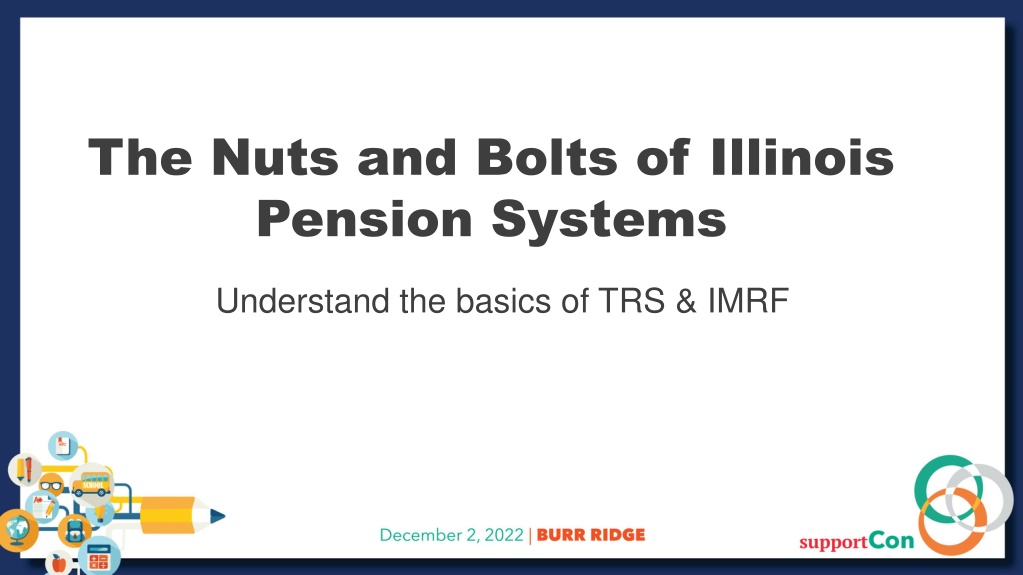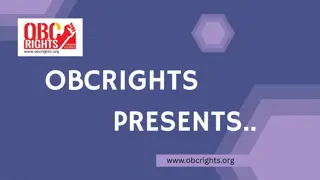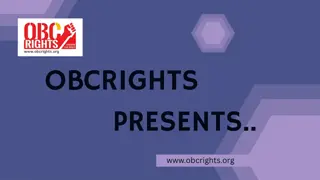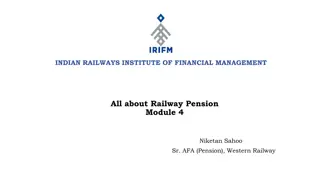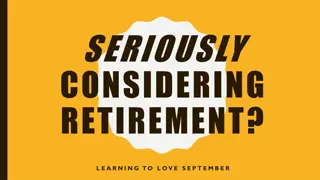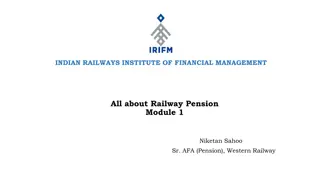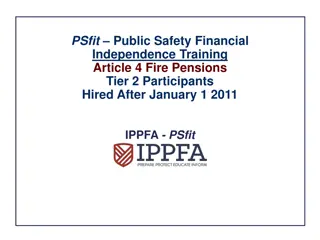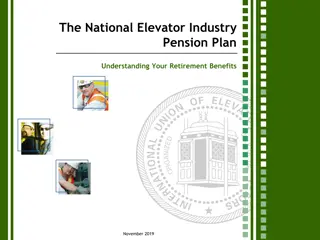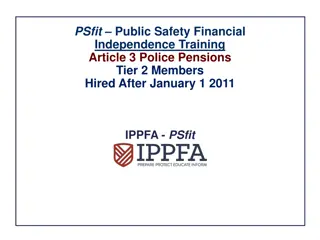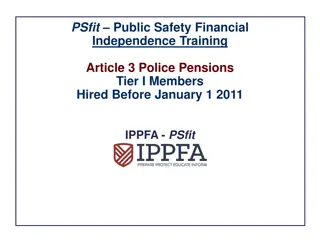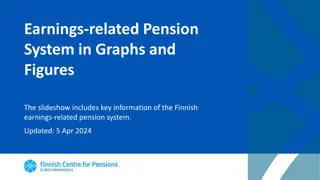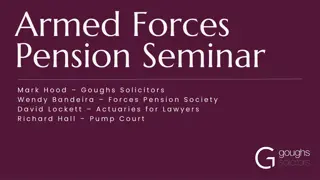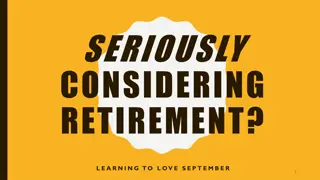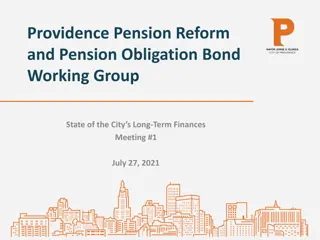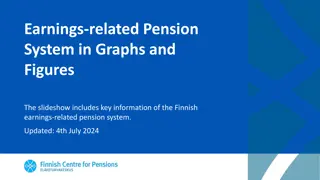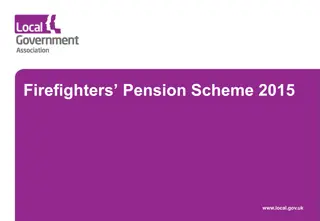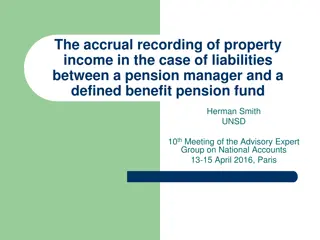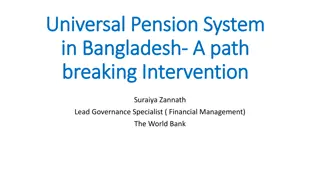Understanding Illinois Pension Systems: TRS & IMRF Basics
Explore the fundamentals of the Illinois pension systems, including the Teachers' Retirement System (TRS) and the Illinois Municipal Retirement Fund (IMRF). Learn about membership tiers, retirement eligibility, contribution rates, and more essential information for public employees in Illinois.
Download Presentation

Please find below an Image/Link to download the presentation.
The content on the website is provided AS IS for your information and personal use only. It may not be sold, licensed, or shared on other websites without obtaining consent from the author. Download presentation by click this link. If you encounter any issues during the download, it is possible that the publisher has removed the file from their server.
E N D
Presentation Transcript
The Nuts and Bolts of Illinois Pension Systems Understand the basics of TRS & IMRF
Introductions Rachel Wisniewski, Moderator Assistant Director of Finance East Aurora School District 131 Jennifer Akin, Speaker Business Office and Payroll Supervisor Hawthorn Community Consolidated School District 73 Albert Lerman, Speaker RICP ChFC Horace Mann Companies
Pension Systems Licensed Staff are members of TRS Support Staff are members of IMRF
Membership Tiers Tier Tier Eligibility requirement Eligibility requirement Vesting requirement Vesting requirement Tier 1 First contributed to TRS/IMRF or reciprocal system December 31, 2010 or BEFORE. 8 years of service Tier 2 First contributed to TRS/IMRF or reciprocal system ON or AFTER January 1, 2011. 10 years of service
Importance of Tiers Tier determines: Member eligibility for benefits Formula used in the calculation of benefits Death benefit coverage Service credit
Pension Calculation Contributing Factors for Retirement Benefits Membership Tier Age Service Credit Final Average Salary (FAS)
When Can I retire with full benefits? Tier 1 members Tier 2 members Age 55 with 35 years of service Age 60 with 10 or more years of service Age 62 with 5 years of service Age 67 with 10 years of service
Contributions System System Member Rate Member Rate Description Description Employer Rate Employer Rate Teachers Retirement System (TRS) 9% 7.5% retirement annuity 0.50% annual increases 1.5% death and survivor benefits .58% Teachers Health Insurance Security (THIS) .90% .90% retirement health insurance *TRIP insurance for retirees before Medicare eligible **TRAIL insurance for retirees eligible for Medicare benefits .67% Illinois Municipal Retirement System 4.5% 3.75 retirement annuity 0.75% surviving spouse benefits average 10% *employer rate varies for each district
Reciprocity What is system reciprocity? The Illinois Retirement Systems Reciprocal Act gives retiring Illinois public employees the option to use service credit earned within the public retirement systems listed in this fact sheet toward a benefit calculated based upon combined pension service between funds.
Which Illinois Pension Systems are Reciprocal? Teachers Retirement System State Employees Retirement System of Illinois Judges & General Assembly Retirement Illinois Municipal Retirement System Laborers Annuity and Benefit Fund of Chicago Municipal Employees Annuity and Benefit Fund of Chicago Metropolitan Water Reclamation District Retirement Fund Park Employees Annuity & Benefit Fund of Chicago Cook Employees Annuity & Benefit Fund of Cook County Chicago Teachers Pension Fund State Universities Retirement System Forest Preserve District Employees Annuity & Benefit Fund Cook County
What Difference does Reciprocity make? Real Life Examples: Suzie was a teacher's aide from 2007 to 2012 and a member of IMRF Tier 1. In 2012, Suzie became a classroom teacher. Suzie would be enrolled as tier 1 with TRS because these pensions systems are reciprocal. Tony worked as a full-time groundskeeper for 2 years (2008 and 2009) at District AA before trade school. In 2012, Tony is hired as a full-time HVAC specialist at District BB and is enrolled in IMRF as Tier 2 Tony attends an IMRF member benefit event and learns about the tiers and wonders if he is eligible for Tier 1. IMRF does an audit of District AA and discovers that Tony worked more than 600 hours in 2008 and 2009. Tony s membership changes from Tier 2 to Tier 1 immediately.
Wage Caps Contributions are limited by the Wage Cap Amount for the membership Tier. Pension benefits are limited by the Wage Cap Amount for the membership Tier. Bottom line: Tier 2 members will receive less pension benefits based on wage cap at time of retirement.
Sample Wage Caps Wage Cap 2021-2022 Wage Cap 2022-2023 Pension System Tier Tier 1 $290,000.00 $305,000.00 TRS Tier 2 $119,892.41 $123,489.18 Tier 1 none none IMRF Tier 2 $119,892.41 $123,489.18 The wage cap amount increases annually by the lesser of 3% or one-half of the increase in the Consumer Price Index (urban) for the preceding September.
Service Credit Key component for vesting and retirement benefits Granted based on time worked TRS and IMRF grant service credit differently Optional service credit may be granted for military service, maternity leave and/or out of state service; contact your pension system for more details.
TRS Service Credit Measured in days 170 days = one year of service credit Unpaid days do NOT count towards service credit Optional service credit (buy-back) option for leave of absence
IMRF Service Credit Measured in months 1-20 days = one month of service credit Work one day in June, receive credit for one month Seasonal work (aides, hall monitors, bus drivers) for one full school year will earn the equivalent to a full year of service credit.
Supplemental Savings Opportunities Will your retirement pension benefits be enough to meet your personal needs? What other savings options are available?
TRS Supplemental Savings Plan Defined contribution plan (optional) 457 account with Voya Financial PRE-tax payroll deduction IRS contribution limits vary each year
IMRF Voluntary Additional Contributions (VAC) Savings account structure Post-tax payroll deduction Contributions limited to 10% of IMRF reportable earnings 7.25% annual interest VAC may be paid in a lump-sum or annuity upon retirement
Retirement Savings 403b and 457b Options
What is 403(b) plan? Established in 1958, a 403(b) plan is an employer-sponsored, tax- deferred retirement plan that may be offered to employees of public schools and tax-exempt organizations. 403(b) plans are also referred to as a tax-sheltered annuity (TSA) although since 1974 they no longer are restricted to an annuity form and participants can also invest in mutual funds. Beginning in 2006, 403(b) plans may also include designated Roth contributions, i.e., after-tax contributions, which will allow tax-free withdrawals if certain requirements are met.
What is 457 plan? 457(b) plan, also known as deferred compensation plan, was created with the passage of the Revenue Act of 1978. Employer-sponsored, tax-deferred retirement plan that may be offered to employees of the State and Federal government and tax- exempt organizations. Employees defer compensation into it on a pre-tax or after-tax (Roth) basis. For the most part the plan operates similarly to a 403(b) plan, but there are some key differences.
How much can I contribute to 403(b) plan? Generally, the lesser of 100% of includible compensation, or $22,500 contribution amount for 2023 (typically increases every year) Your district may allow An additional $3,000 if eligible for 15 years of service catch-up An additional $7,500 if eligible for age 50 or older catch-up Aggregate limits for multiple plans
How much can I contribute to 457 plan? Generally, the lesser of: 100% of includible compensation, or $22,500 contribution amount for 2023 (typically increases every year) Your district may allow: An additional $7,500 if eligible for age 50 or older catch-up Special catch-up contributions allowing a participant in the last three years before normal retirement age to contribute the lesser of: -Twice the annual limit ($45,000 in 2023) -The basic annual limit plus the amount of the basic limit not used in prior years (only allowed if not using age 50 or over catch-up contribution)
Comparing 457 and 403(b) plans Similarities Tax-deferred contributions (requires taxes to be paid upon distribution) Roth after-tax contributions an option (if allowed by plan) Loan provision (if allowed by plan) Rollovers at any age upon separation of service or retirement Catch-up contribution provision for age 50 and over (if allowed by plan) Differences 10% IRS penalty tax on distributions made prior to age 59 applies to 403(b) but not 457(b) 403(b) plan special 15 years of service catch-up contributions (up to a lifetime maximum of $15,000) (if allowed by plan) 457 plan special catch-up contributions the last three years before normal retirement age (if allowed by plan)
When can I access my money? Withdrawals from a 403(b) plan may not begin before Withdrawals from a 457 plan may not begin before Age 70 If you retire or leave your job for any reason Loans (if allowed by plan) In situations of unforeseeable emergency (if allowed by plan) Financial hardships (if allowed by plan) 10% federal penalty tax does not apply for early withdrawal Income taxes are payable when money is withdrawn, unless designated as Roth account Age 59 Loans (if allowed by plan) Disability or death of employee Financial hardships (if allowed by plan) 10% federal penalty tax for early withdrawal Income taxes are payable when money is withdrawn, unless designated as Roth account
Does Pension Impact Social Security and Medicare? All public-school staff wages are subject to Medicare contributions. All TRS members are not subject to Social Security contributions.
Can Workers Compensation Interfere with my Pension? In general, Workers Compensation payments are not reportable to either pension system as creditable earnings when staff member receives 66- % of salary directly from insurance carrier. Payroll is suspended until staff member returns to work. No service credit is earned while off work due to injury.
Alternate Workers Compensation Option Staff member is made 100% whole Wages are processed through payroll and are taxable 66-2/3% paid by insurance carrier 33-2/3% paid by District as paid time off Service credit is earned while off work due to injury
Does my Pension offer Disability Benefits? Yes, both pensions offer temporary disability benefits based on key factors.
TRS Temporary Disability Eligibility requirement, 3 years of service credit Condition must qualify Exhaust all paid time off (sick and personal days) Apply and submit all necessary documentation If approved, 40% of salary paid plus earn service credit
IMRF Temporary Disability Eligibility, minimum of 12 consecutive months service credit Condition must qualify Exhaust all paid time off (sick, personal and vacation days) Payments begin after 30 unpaid days Apply and submit all necessary documentation If approved, 50% of salary paid plus earn service credit
Death Benefits Why does the pension system want beneficiary information? When a member of the pension system passes away, beneficiary receives the death benefit. Keep your beneficiary information up to date Life Events happen and we forget to update our beneficiary Inform the beneficiary of your wishes and provide pension contact info. Death benefits are not insurance payments and therefore not subject to federal tax.
Unused Sick Days Pension members can increase their service credit with unused sick days.
TRS Unused Sick Days 2 years of additional service credit allowed 170 days equal one year of service credit Maximum of 340 unused sick days may be reported Check contract language for District limits Additional service credit may impact pension
IMRF Unused Sick Days 1 year of additional service credit allowed 20 days equal one month of service credit Maximum of 240 unused sick days may be reported Check contract language for District limits Additional service credit may impact pension
Questions and Answers We thank you for your time!
Presenters: MODERATOR INFO: Rachel Wisniewski, Assistant Director of Finance East Aurora School District 131 RWISNIEWSKI@d131.org PANELISTS INFO: Jennifer Akin, Business Office and Payroll Supervisor Hawthorn Community Consolidated School District 73 akinj@hawthorn73.org Albert Lerman, RICP ChFC Horace Mann Companies Albert.lerman@horacemann.com
